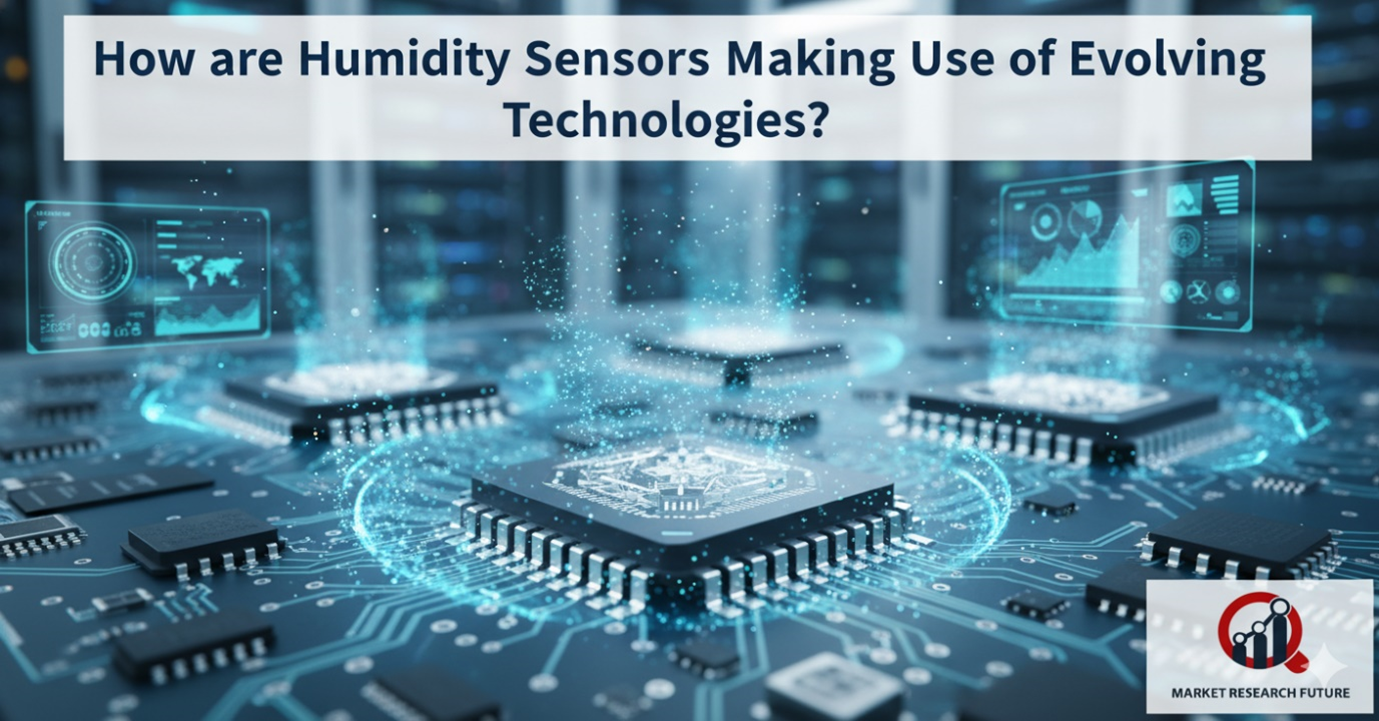
Humidity Sensor Market Outlook
Humidity sensors are becoming very important parts of modern smart systems as data and automation become more and more important in the world. These new gadgets measure the amount of water vapor in the air or in materials and turn it into signals that can be read and used for monitoring and control. Humidity sensors used to be only used in factories and for environmental purposes. Now, they are built into everything from appliances to wearable devices, changing the way we use technology.
In the past, humidity sensors were used in factories, farms, and climate control systems to make sure the environment was as good as it could be. These sensors have come a long way since they were first used to monitor the environment. Today, thanks to advances in miniaturization, materials science, and the Internet of Things (IoT), they do much more than that. Modern humidity sensors are small, very sensitive, and can be built into portable or wearable electronic systems for many different uses, such as healthcare, cars, and smart homes.
Their role in Human Body-Related (HBR) humidity detection is especially exciting. These sensors are now being used to keep an eye on things like breathing, skin moisture, and speech recognition. Humidity sensors are changing the future of wearable health technology by keeping track of hydration levels and helping with health diagnostics that don't require contact.
Changing uses and new technologies
The rise in demand for smart, small, and energy-efficient sensors has led to new materials and ways of making things. For instance, thin-film and flexible humidity sensors are being built into everyday things like clothing and face masks to keep track of breathing and physical activity. This technology gives you real-time information about a person's health and well-being without making them uncomfortable or needing invasive equipment.
Humidity sensors can now be put on the forehead, chest, or hands in healthcare to measure small changes in skin moisture or sweat. These are factors that can help find out if someone is stressed, tired, or even telling the truth. These features, which don't require any contact or surgery, make them perfect for use in smart diagnostics and medical monitoring.
Humidity sensors are becoming an important part of smart homes and industrial systems, in addition to being good for your health. They are built into air conditioners, dehumidifiers, air purifiers, and thermostats to keep you comfortable and save energy. In factories, they keep the right amount of humidity to make sure that products are of good quality and that equipment is safe. This is especially important in industries like food processing, pharmaceuticals, and textiles.
The automotive industry has also started using these sensors to control the quality of the air inside the cabin and stop fogging in cars with advanced climate control systems. In agriculture, on the other hand, humidity sensors are being used with IoT platforms and AI-driven analytics to improve precision farming. This helps farmers keep a better track of soil moisture, crop health, and greenhouse conditions.
Combining with IoT and next-generation systems
One of the biggest changes in the humidity sensor market is that they are now part of Internet of Things (IoT) ecosystems. Real-time environmental data can now be analysed remotely for predictive maintenance, process optimization, and environmental monitoring by combining sensors with wireless connectivity and cloud computing. This change is making businesses more productive and responsive.
Researchers are also looking into how to use MEMS (Microelectromechanical Systems) and nanomaterials to make sensors that are smaller, faster, and more accurate than ever. These new technologies are making it possible to make sensor systems that are flexible, wearable, and even clear. These sensors can easily blend in with smart fabrics, medical devices, or interactive surfaces.
Humidity sensors are making it possible to make non-contact switches and touchless controls in the field of human-machine interfaces. This is an important step forward in lowering the risk of cross-contamination, especially in healthcare and public settings. These sensors are an important part of the next generation of smart devices and robots because they can tell when the moisture level changes in human skin or breath.
Final Thoughts
As businesses move toward digital transformation, humidity sensors are changing from basic environmental tools to smart parts of intelligent ecosystems. The fact that sensors are becoming more important in healthcare, smart living, and industrial automation shows how far the technology has come. The combination of IoT, flexible electronics, and design that focuses on people keeps growing their potential. In the near future, humidity sensors will not only keep an eye on the air around us, but they will also improve our health, safety, and the way we interact with the world.